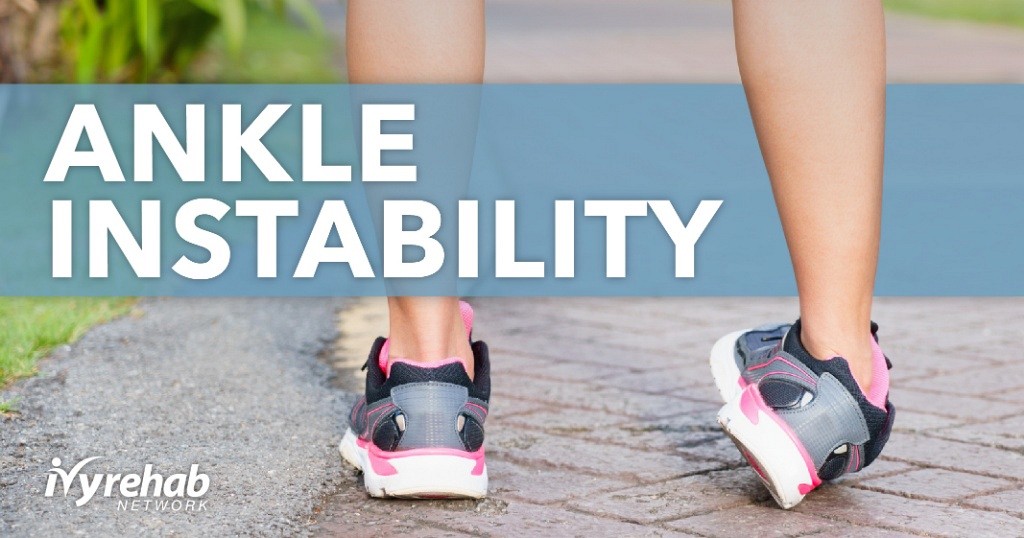This content was updated for accuracy and relevance on August 28, 2023
How many times have you turned your ankle doing something as benign as walking in your backyard? How about walking across a seemingly flat parking lot? You are not alone. According to an article from Massachusetts General Hospital, more than 1 million ankle injuries occur every year with 85% being sprains. This is more than any other joint injury leading to instability and a reduction in quality of life.
What exactly is an ankle sprain?
To understand, you first need to be familiar with the anatomy of the ankle. The ankle joint is made up of 3 bones, the Tibia (larger bone in the lower leg), the Fibula (smaller bone on the outside of the lower leg), and the Talus (top bone in the foot that has a dome-shaped upper surface). The connective tissue that holds the bone together to form joints is called a ligament. When the ligament is damaged, that is referred to as an acute ankle sprain.
Ankle sprains are classified into 3 categories:
- Grade 1: A slight disruption in the ligament tissue resulting in, but not limited to, some swelling and soreness resulting in altered function for 1-3 days;
- Grade 2: A partial tear in the ligament resulting in moderate swelling and significant soreness with more loss of function and a need for less than full weight-bearing for 2-4 weeks (physical therapy is recommended for Grade 2 and above);
- Grade 3: Full tear of the ligament resulting in a loss of joint integrity and need for repair. The recovery time for a Grade 3 sprain is 8-12 weeks and usually requires surgery.
What causes an ankle sprain?
Most initial ankle sprains occur due to trauma. This may be a sports-related injury, a car accident, or a fall at home due to tripping on an object on the floor. The mild sprain can become chronic if untreated, and the ankle is injured again in less than 6 months. Due to the inelasticity of the ligament structure, the more the ankle is sprained, the more unstable it becomes. In other words, it does not take as much force to sprain the ankle again as it did the first time. Uneven surfaces found in the backyard or in a parking lot with loose gravel can now cause the ankle to be sprained due to the laxity of the ligament. The bigger issue is that as a result of this increased chance of this common injury with walking on uneven ground, the person’s quality of life begins to suffer. In order to avoid getting hurt again, the individual will stop playing in the yard or stop going out in the community where there may be loose gravel.
Diagnosing and treating an ankle sprain
Thankfully a severe ankle sprain can be managed. However, the treatment is not as simple as Rest, Ice, Compression, and Elevation (R.I.C.E) followed by a few exercises at the ankle to make it go away. According to research done by Arnold, Wright, and Ross in 2011, patients with chronic ankle instability loss proprioception (body awareness in space), strength, and function. So, for ankle treatment to be effective, it must address all these issues.
When diagnosing an extremity injury, it is easy to isolate the injury site. For example, the physician may instruct, “The lateral ankle ligaments are a Grade 2 sprain. Put the patient on crutches, ice the injured ankle, prescribe NSAID and initiate ankle range of motion exercise in the next week.” This addresses the ankle injury. However, this approach misses an important part of the recovery and return to full function. As a matter of fact, if you follow this approach and return the patient to the prior level of function, they are just as likely to reinjure the same ankle in the near future.
How physical therapy can help an ankle sprain and prevent reinjury
The issue from a physical therapy perspective is that the extremities work in consort with the rest of the chain, upper or lower. Therefore, if you focus on the injured ankle region alone and ignore the rest of the lower chain, the patient remains susceptible to further ankle injury. As demonstrated in the study performed by Docherty et al. In a 2006 article in the Journal of Sports Medicine, “Postural control deficits were identified in participants with ankle instability.”
The secret to long-term relief from chronic ankle instability is to strengthen the entire lower chain, starting at the hip, incorporate balance and coordination and address the loss of proprioception. The muscle group that is possibly the most important in the effort to reduce reoccurring ankle sprains is the gluteus medius. The gluteus medius is a muscle that controls the lateral sway that occurs with walking. If this muscle is weak or even sluggish to respond during gait, the center of gravity will travel outside the person’s base of support and thus increase their chances of inverting the ankle. Now, all it would take is walking in an uneven yard and the ankle stability would be compromised.
If this sounds like you, give us a call at Ivy Rehab Physical Therapy. We can set you up with a free injury screening. From there we can determine the proper course of action and address the whole problem.
Written by Michael Bennington, PT, Clinic Director, Ivy Rehab Physical Therapy, Washington, Illinois
Article Reviewed by Holly Lookabaugh-Deur, PT, DSc, GCS, CEEAA
Holly Lookabaugh-Deur, PT, DSc, GCS, CEEAA is a practicing physical therapist and a partner and Director of Clinical Services at Ivy Rehab Network. Deur is board certified as a geriatric clinical specialist and certified exercise expert for aging adults with more than 35 years of clinical experience. She is certified as an aquatic and oncology rehabilitation specialist and serves as adjunct faculty at Central Michigan University and Grand Valley State University.
Resources:
- https://www.massgeneral.org/ortho-foot-ankle/conditions-treatments/ankle-instability.aspx
- Arnold, B.L., Wright, C.J., Ross, S.E. (2011). Functional ankle instability and health-related quality of life. Journal of Athletic Training, 46(6), 634-641.
- Docherty, C.L., Valovich, McLoed, T.C., & Shoultz, S.J. (2006). Postural control deficits in participants with functional ankle instability as measured by the Balance Error Scoring System. Clinic Journal of Sports Medicine, 16, 203-208.





